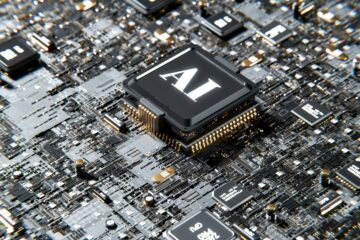Tesla Inc. (Nasdaq: TSLA) – market cap as of 29/09/2018: USD 45.17bn
Recent History
Tesla Inc. has been on the front page of newspapers since its IPO in 2010. Elon Musk, its charismatic CEO and Chairman, is one of the most famous entrepreneurs in current times and he has been able to transform a small start-up into a globally notorious player. But the path, of course, has not being easy, as the company has still never had a profitable year since its foundation. The story of Tesla is one of high promises and low actual results. Nevertheless, the equity story of the company is a unique combination of ambition and vision, one able to convince investors that, despite the lack dividend distribution in the foreseeable future and the constant threat of bankruptcy, Tesla is still an investment that will pay off in the long-run.
The analysis we carried out focuses on the period from the end of 2016, when the great stock price rally started, to the ongoing controversies on the sustainability of the business.
In 2016, the combined volume of Model S and Model X delivered was 76,000 vehicles, shy of the initially announced 90,000. Despite not achieving the expected product delivery results, at the beginning of 2017 Tesla stock rallied from around $200 per share to over $300 in just a few months, reaching a peak of $385 in the middle of June. The first semester of 2017 was the golden period of Tesla stock, driven by the first profitable quarters in the company’s history and by the high expectations of the launch of Model 3, the company’s first mass market vehicle.
It appeared as if Tesla was finally starting to gain traction and reaching sufficient mass to impose itself in the high-premium sport car market. Tesla temporarily broke even on cash, but the company needed more growth to become a stable player and its ultimate goal was still to reach the mass market, thus requiring significantly more cash to spend on capex.
In March 2017, in the midst of the euphoria, Tesla announced a rights issue, managing to raise $1.4bn in equity and convertible bonds to finance the production of the new Model 3, which the company expected to launch in 2018 with a target price between $35,000 and $50,000. This was a crucial moment for Tesla, bringing it to the next phase of its plan to reach the mass market.
Despite the abundance of skepticism, the appetite for the stock grew stronger, driving up the valuation of the company from around $40bn in January to $51bn in April. Indeed, the 10th of April was an important milestone for Tesla because it surpassed the $50bn market cap of GM, right after having beaten Ford the month before. This event shocked the financial community, profoundly dividing the investors, because many could not believe that a company had delivered less than 80k cars in the previous year could be more valuable than Ford, that sold 6.6mn or GM that sold 10mn in the same period.
Yet the stock kept rallying until August 2017, when the first Model 3 started being delivered. The targets of producing 5,000 Model 3 vehicles a week by the end of 2017 and 10,000 a week by the end of 2018, seemed questionable, especially considering heavy production delays of the precedent vehicles.
On top of that, analysts criticized the $35,000 price of the model, because it implied selling the vehicle at a loss, even after factoring full production. Selling at a loss, however, is the standard in the EV market, as all the other companies rely on sales of fuel-based vehicles to finance the research on electric vehicles and do not target profitability in the short-term, in spite of selling more vehicles than Tesla. More specifically GM reported that it had sold 17,000 Bolt cars by October 2017, losing $9,000 per vehicle sold). Tesla, on the contrary, cannot rely on sales of fuel-based vehicles, so its only option to stay in the market is to reach profitability soon, so it will eventually be forced to leverage their brand and raise the ticket price.
To finance the Giga-plant, an enormous production plant in Nevada, needed for the model 3, Tesla turned for the first time to straight debt instruments, issuing $1.8bn worth of bonds. The rating of the company had just been revised down to a B- with negative outlook from a B according to Standard & Poor’s, but the company managed to issue bonds at a 5.3% interest rate, which is quite cheap for what effectively is a junk bond. It is interesting to note how expensive compared to the previous coupon of 2.38% on its most recent convertible bonds, because before investors were willing to receive lower coupon in exchange for upside exposure of a convertible.
The period of time between September 2017 and June 2018 has been called Production Hell for Tesla and for a reason. The initially forecasted level of production of 5,000 vehicles a week by end 2017 was missed by a long shot for two trimesters. There were several issues around the production: the excessive reliance on automation backfired, to the point that Musk himself ended up saying that humans are “underrated” and better than robots in many aspects of a production line. Furthermore, there were a lot of bottlenecks in the supply of components that ended up delaying the whole production. Finally, logistical problems emerged in the shipment and delivery of the cars. The 5,000 vehicles per week was reached only in the summer and thanks to an additional tent put up in the parking lot of the factory were the production line was extended. Investors at this point were starting to lose faith in Tesla, as the company kept burning $1bn cash every 3 months. During this period, Tesla became the most shorted stock in history, as a great amount of funds did not believe that a company could sustain $60bn in EV on less than $300mn EBITDA, all the while steadily losing money.
In November 2017, Musk surprised by presenting the new Roadster, the mass-produced vehicle with the fastest acceleration ever made, and the Semi truck, sparking a rebound in the market prices of Tesla. The rally reverted in the following months, among new controversies including incidents with the autopilot.
Production value per week finally reached the 5,000 target in early summer 2018, with a delay of 6 months, which prompted a rebound in the stock, which reached a six-month high price of over $350 per share.
Tesla: Private or Public?
Genesis
On August 7th 2018, Tesla CEO Elon Musk tweets “Am considering taking Tesla private at $420. Funding secured”, without having neither lawyers nor Tesla board check the message. At the time, market capitalization was nearly $60bn, and taking it privately at $420 per share implies a valuation of $72bn. Share price shot up by 11% that day, causing trading to be halted for around two hours in the afternoon. Later, he explained that the proposal followed discussions with the Saudi sovereign wealth fund. Two weeks after announcing the possibility to take Tesla private, he wrote addressing advisers and shareholders, stating that remaining public would be “in the best long-term interests of Tesla”. Afterwards, following many shareholder lawsuits, the US SEC subpoenaed Musk’s tweet, questioning the truthfulness of the “funding secured” statement, the lack of which would make the CEO guilty of market manipulation or fraud.
The Question
Musk himself thinks that the status of public company causes strong pressure when quarterly reports approach. The decisions that lead to a solid quarterly performance can, in fact, hinder long-term growth prospects. SpaceX, Musk says, “is far more operationally efficient” because it is privately held.
The first issue to address in a potential discussion to make Tesla private is that in order to be freed from the obligation of publishing quarterly statements, Tesla needs to bring down its shareholder base to no more than 300 investors, otherwise the SEC could oblige Tesla to still publish period financial statements. At the moment, the company has +800 institutional shareholders who own about 60% and thousands of individuals own less than 20%. An alternative could be to create funds like the one by Fidelity in SpaceX, to allow multiple investors to account as one. Moreover, many institutional investors have limits on how much they can invest in private companies, which is yet another reason to stay public.
Future Outlook
Tesla is forecasted to barely break even in the 3rd quarter of this year and its profitability is dependent on whether it will be able to reach 50,000 vehicles produced in the second half of 2018. Furthermore, despite Musk repeatedly saying that it won’t reach out to capital markets for more funding, it is evident that it will need to do so. Indeed, new investments will be needed for the infrastructure for the Semi truck and for the new giga-factory in China, to be built by 2020. In addition to this, the convertible bonds issued in March 2017 will be exercised soon and Tesla will need to pay for the differential, further worsening the need for cash. All in all, although Tesla seems close to stabilisation, rough times are expected and it might be safer for the company to raise capital now rather than when it is in dire need of it, because then it will be a lot more expensive.
NIO – The Competition
Overview
NIO is a Chinese electric car manufacturer headquartered in Shanghai. Founded in November 2014 by William Li, today it counts more than 6000 employees and it is active in 4 markets: Chain, US, Germany, and UK.
NIO is the first Chinese electric vehicle start-up. At the moment, it offers only one type of car, the ES8 SUV model. The offer will broaden from 2020 when two new cars will enter the US market: EVE and EP9. EVE will be driven by NOMI, a proprietary artificial intelligence engine with a human interface, providing verbal and visual connections within the car, that constantly learns from road trips and is able to autonomously move and redesign the seats and interiors according to different needs. EP9 is the third fastest electric supercar in the world, reaching 200km/h in just 7 seconds, with a top speed of 313km/h. NIO competitive advantage lies in the significant price difference between its cars ($60k) and the ones of competitors (e.g. $115k of Tesla’s SUV), in the unique customer app and on the emphasis on user experience.
IPO
NIO, often referred to as Tesla’s main rival, is under scrutiny because of manufacturing defects, missed delivery deadlines and electricity consumption. It originally expected to raise $1.8bn in the September IPO, a target later lowered to $1.16bn. The IPO marked a shift in the fundraising strategy of NIO, which previously relied on private equity and venture capital for the first fundraising rounds, during which it raised capital for a total of $2.4bn. Among its holders, there are Tencent (15.2% in NIO, and also a 5% stake in Tesla), Baidu, Sequoia and Temasek. The IPO comes after delivering less than 500 cars in its life (it started delivering in June 2018), reporting $7m of revenue generated H1 2018 and a total net loss of $1.6bn in the latest three years (of which $525m H1 2018). The IPO, announced on September 12th, sees 160,000,000 American depositary shares (“ADSs”) sold for $6.26 each, amounting to slightly more than $1bn. One day after its debut the stock soared 109%, from $6.26 to $13.80. As of 25/09/2018, the increase is of 27% accounting for all 9 trading days.
Outlook
“We believe that improved smart electric car technologies, coupled with better experience of car ownership, will drive increased appreciation and adoption of smart electric cars, leading to the fulfilment of our vision of blue skies (NIO translation) and a more sustainable future for our planet”. This is what William Li wrote on the front page of letter to potential investors. To achieve this goal, NIO has outsourced car manufacturing to a Chinese state-owned carmaker JAC Motors and channeled its efforts on car designing, app developing and store expansion.
Besides a few provisions that oblige the company to compensate JAC Motors for past and incoming losses, NIO cannot reach the 120,000-a-year capacity that its plant can offer, and as a result many clients have withdrawn their orders. In order to face demand, a second plant is under construction in Shanghai and will be ready by 2020. NIO’s proprietary self-driving systems and R&D technological developments result in 737 registered patents and 1995 pending in US, EU, HK and China.
In order to support the +300 electric car start-ups (most of them haven’t moved forward concept car making), the Chinese government has granted special manufacturing permits to firms producing vehicles fueled by renewable energy. Another advantage regards R&D grants and consumer subsidies, in addition to the exemption for energy cars from a few licensing restrictions.



0 Comments